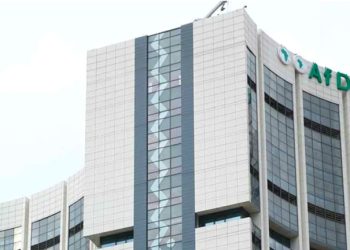
 Namibia is an African country that offers several attractive investment opportunities for investors. Some of the reasons for investing in Namibia include:
Strong economic growth:Â Namibia has a stable and growing economy, with an average annual growth rate of 3% over the past decade. This has been driven by the country’s mineral-rich resources and its efforts to diversify its economy into other sectors such as tourism and agriculture.
Favourable business environment:Â Namibia has a favourable business environment with a supportive government, stable political climate, and low levels of corruption. The country also ranks highly in terms of ease of doing business and has a well-developed infrastructure and legal system.
Rich natural resources:Â Namibia is rich in natural resources, including diamonds, gold, silver, copper, zinc, and other minerals. The mining sector is a key contributor to the country’s economy and offers investment opportunities in exploration, production, and processing.
Growing tourism industry:Â Namibia is a popular tourist destination known for its diverse landscapes, wildlife, and cultural heritage. The tourism industry is growing rapidly and offers investment opportunities in areas such as hotel development, tour operations, and wildlife conservation.
Agricultural potential:Â Namibia has vast agricultural potential, with favourable climatic conditions and abundant natural resources. The government is actively promoting agriculture as a key sector for economic growth and job creation, offering investment opportunities in areas such as irrigation, livestock production, and agro-processing.
Overall, Namibia presents a compelling investment case for investors looking for high-growth opportunities in a stable and supportive business environment.
But the rest of the world is moving forward, and fast. What steps can Namibia take to become part of the technology revolution?
There are several steps that Namibia can take to become part of the global technology revolution:
Invest in education and skills development:Â To take advantage of the technology revolution, Namibia needs to invest in education and skills development to ensure that its citizens have the necessary skills and knowledge to participate in the technology sector. This could include initiatives to promote science, technology, engineering, and mathematics (STEM) education and to provide training programs for people to acquire digital skills.
Encourage entrepreneurship and innovation:Â Namibia can foster an environment that encourages entrepreneurship and innovation by providing support to startups and small and medium-sized enterprises (SMEs) in the technology sector. This could include access to funding, mentorship, and training programs.Â
Develop technology infrastructure:Â To support the growth of the technology sector, Namibia needs to invest in developing its technology infrastructure, including broadband connectivity and data centres. This will help to attract technology companies to the country and support the development of new technology products and services.
Promote digital government services:Â Namibia can encourage the adoption of technology by promoting the use of digital government services. This could include initiatives to digitise government processes and provide citizens with access to online services such as e-commerce, e-health, and e-government.
There is still an opportunity for the government to become more efficient in the roll-out of basic services. Just registering a company could be done far quicker. The rest of the world is already ahead of Namibia on this.
I can hear the chirps about the usurious data charges for access to mobile telephony. I had a SIM card for the week I was in town. There is definitely a need to improve on the cost of data and the rate at which the data is depleted.
Foster collaboration and partnerships:Â To become part of the global technology revolution, Namibia can foster collaboration and partnerships between government, the private sector, and academia. This will help to bring together the different skills and expertise needed to develop and commercialise new technology products and services.
In summary, by investing in education and skills development, encouraging entrepreneurship and innovation, developing technology infrastructure, promoting digital government services, and fostering collaboration and partnerships, Namibia can become part of the global technology revolution and reap the benefits of a thriving technology sector.
But all this is only possible if the country is deliberate about lowering the cost of data to access the internet.
This was the question I had at the back of my mind, “can Namibia meaningfully compare itself to the rest of the Southern Africa block and the current economic darlings?”
Namibia can compare itself to several nations to drive its economic growth plan, including:
South Africa:Â South Africa is a regional economic leader and has a well-developed infrastructure and a thriving technology sector. Namibia can learn from South Africa’s experiences on how to develop policies that are aimed at broadening economic participation. These would assist the nation build on its successes to drive its own economic growth.
Mauritius:Â Mauritius is an African island nation that has successfully transformed itself into a hub for finance, tourism, and information technology. Namibia can learn from Mauritius’ experiences in developing a diverse economy, driving a fast paced financial services sector and building a supportive business environment for innovation-led enterprises.
What about examples from elsewhere in the world?
- Singapore:Singapore is a small island nation that has become a global hub for trade and investment. Namibia can learn from Singapore’s experiences in attracting foreign investment, promoting entrepreneurship, and developing a strong technology sector.
- United Arab Emirates (UAE):The UAE is a Middle Eastern nation that has successfully transformed itself into a hub for trade, tourism, and technology. Namibia can learn from the UAE’s experiences in diversifying its economy away from hydro-carbon fuels as its main export to tourism and financial services strongly supported by a buoyant construction sector.
The UAE is also a great case study for nations seeking to understand how to become globally relevant without creating enemies: an enemy of none and a friend to all.
- Kenya:Kenya is an African nation that is a leader in the use of technology for economic development. Namibia can learn from Kenya’s experiences in promoting the use of technology for economic growth and building a thriving technology sector that now rivals far more developed countries like Nigeria and South Africa.
In summary, by comparing itself to nations with successful economic growth strategies, Namibia can identify best practices and implement similar initiatives to drive its own economic growth.
What about the future of Namibia? Its Youth:
The future for the youth of Namibia is full of potential, but also faces challenges. Here are some of the key factors that will shape the future for young people in Namibia:
Education and skills development: Investing in education and skills development is crucial for the future of the youth in Namibia. By providing access to quality education and training programs, young people will be equipped with the skills and knowledge needed to succeed in a rapidly changing job market.
Where are the real economic opportunities?
The creation of new economic opportunities is essential for the future of the youth in Namibia.
The government and the private sector can work together to create jobs and support the development of small and medium-sized enterprises (SMEs) in areas such as agriculture, tourism, and technology.
The emergence of the renewable energies sector is a big deal for Namibia and has the potential to change the geo-politics of the Southern Africa region.
You can’t really share a perspective without take a view on the political stability of the country:
Political stability and good governance are key factors for the future of the youth in Namibia. A stable and supportive political and legal environment will help to attract investment and create new economic opportunities for young people.
How the nation deals with publicised incidents of corruption like fish-rot will be a signal for the investor community.
To-date, the jury is out.
What about the Health and well-being of Namibians?
Ensuring the health and well-being of the youth in Namibia is essential for their future success. The government and health organisations can work together to provide access to quality healthcare, education on healthy lifestyles, and support for mental health and well-being.Â
And finally, let’s talk about Environmental sustainability:
The future of the youth in Namibia is also linked to environmental sustainability. By promoting sustainable development and protecting the country’s natural resources, young people will be able to enjoy a healthy and thriving environment in the future.Â
In summary, by investing in education and skills development, creating economic opportunities, promoting political stability and good governance, ensuring health and well-being, and promoting environmental sustainability, the future for the youth in Namibia will be bright and full of potential.Â
How can the youth of Namibia drive the country’s economic revolution?
Namibia can leverage its youthful population to spur economic growth in several ways:
Invest in education and skills development:Â By investing in education and skills development, Namibia can equip its youthful population with the knowledge and skills needed to succeed in a rapidly changing job market. This will help to create a highly skilled workforce that is attractive to businesses and investors.
Promote entrepreneurship:Â Namibia can promote entrepreneurship among its youthful population by providing access to funding, mentorship, and training programs. By supporting young entrepreneurs, Namibia can tap into the innovative and creative energy of its youthful population and drive economic growth.
Encourage the development of new technology:Â Namibia can encourage the development of new technology by providing support to startups and small and medium-sized enterprises (SMEs) in the technology sector. This will help to harness the technological skills and expertise of its youthful population and drive economic growth.
Foster youth engagement in the workforce:Â Namibia can foster youth engagement in the workforce by providing access to job training and employment opportunities, particularly in areas such as agriculture, tourism, and technology. This will help to ensure that the youthful population is fully engaged in the economy and contributing to economic growth.
Encourage social and political involvement:Â By encouraging its youthful population to be socially and politically involved, Namibia can tap into their energy and ideas to drive economic growth. This could include initiatives to promote youth leadership, civic engagement, and political participation.
In summary, by investing in education and skills development, promoting entrepreneurship, encouraging the development of new technology, fostering youth engagement in the workforce, and encouraging social and political involvement, Namibia can harness the potential of its youthful population to spur economic growth.
* Vusi Thembekwayo is a South African venture capitalist, entrepreneur and the Founding CEO of MyGrowthFund & IC Knowledge Bureau.











